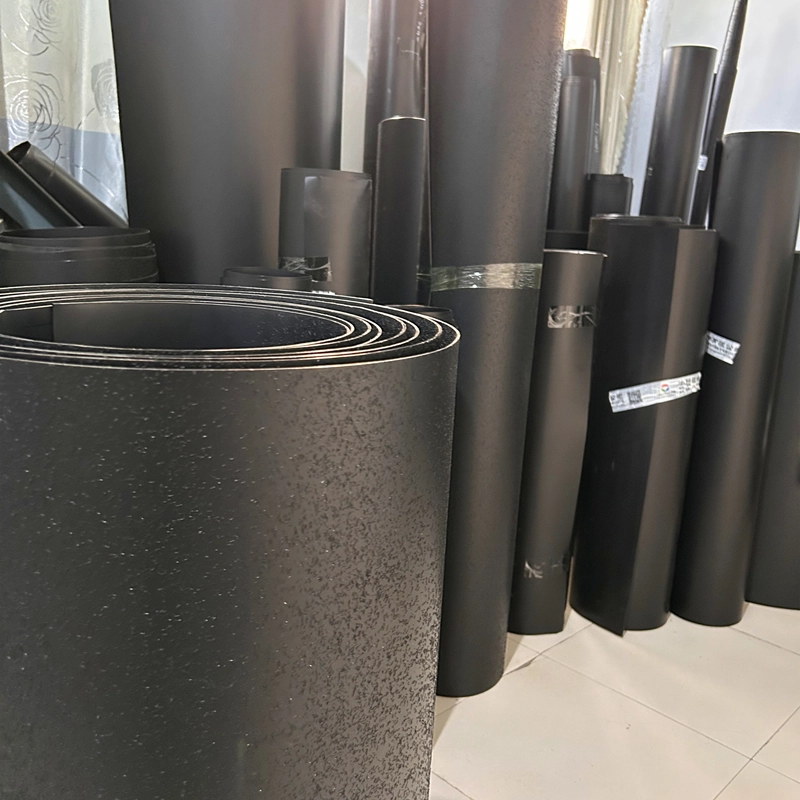
1. Introduction to composite geomembrane products
Composite geomembrane is an impermeable material made of geotextile and geomembrane. It is mainly used for anti-seepage. Composite geomembrane is divided into one cloth and one film and two cloths and one film. It has tensile, tearing, bursting, etc. It has high physical and mechanical performance indicators and can meet the needs of civil engineering projects such as water conservancy, municipal administration, construction, transportation, subways, and tunnels. Because it uses polymer materials and adds anti-aging agents in the production process, it can be used in unconventional temperature environments.
2. Product features of composite geomembrane:
(1) High puncture resistance and large friction coefficient;
(2) Good aging resistance and adaptability to a wide range of ambient temperatures;
(3) Excellent anti-drainage performance;
(4) Suitable for water conservancy, chemical industry, construction, transportation, subways, tunnels, garbage disposal sites and other projects.
3. Composite geomembrane applications in the engineering field
(1)Water conservancy projects: Used for anti-seepage and seepage control in water conservancy projects such as reservoirs, channels, and dams.
(2)Environmental Engineering: Used for anti-seepage, separation and pollution control in environmental projects such as landfills, chemical parks, sewage treatment plants, etc.
(3)Traffic Engineering: Used in roadbed anti-seepage, reinforcement and soil stabilization in traffic projects such as highways and railways.
(4)Construction engineering: Used in foundation engineering for anti-seepage, thermal insulation, moisture-proofing and soil reinforcement of buildings.
(5)Agricultural engineering: used for anti-seepage and water resources management of agricultural channels, pools, reservoirs, etc.
(6)Mining engineering: used in anti-seepage and environmental protection of mine tailings ponds, stockpiles, etc.
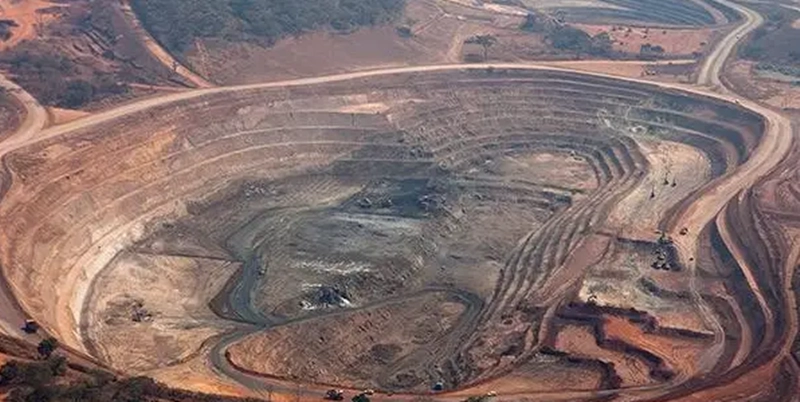
Mine tailings projects without composite geomembrane repair
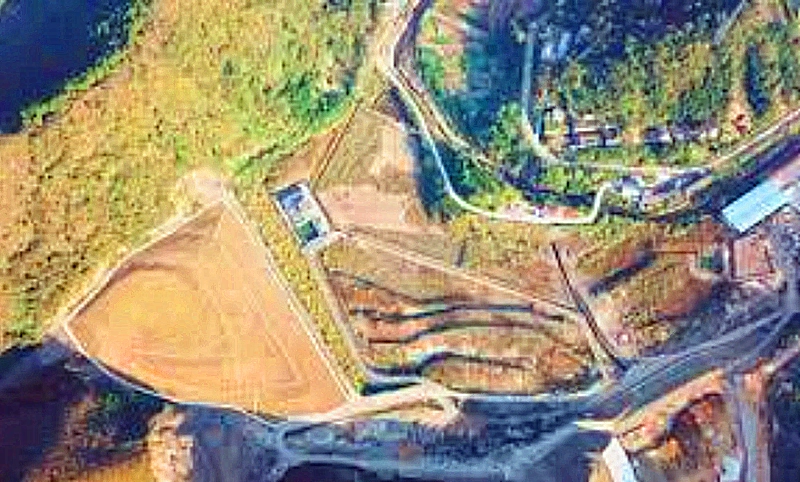
Illustration of mine tailings project after greening and restoration
4. Composite geomembrane material selection
Based on field research in nearby mines and the conditions of the mine, it was decided that the anti-seepage layer of the project should be constructed with a composite geomembrane. This material is two cloths and one membrane, with a width of 6m and high physical and mechanical properties such as tensile strength, tear resistance, and bursting. , has the characteristics of high strength, good elongation performance, large deformation modulus, acid and alkali resistance, corrosion resistance, aging resistance, and good anti-seepage performance, and can be used in unconventional temperature environments. In order to reduce ultraviolet radiation and increase anti-aging properties, the buried method is used for laying.
5. Transportation of composite geomembrane
The composite geomembrane must not be dragged or pulled hard during transportation to avoid being stabbed by sharp objects. In the actual construction process, first use sand with a relatively small particle size as much as possible to level the base surface and lay the geomembrane. If the geomembrane is damaged, it needs to be repaired with geomembrane adhesive 3 times the damaged area.
6. Laying of composite geomembrane
(1) The laying order is first on the side slope and then on the bottom of the site. According to the actual conditions of the project, the laying process needs to be applied from top to bottom on the side slope.
(2) Two adjacent longitudinal joints on both sides cannot be on the same horizontal line and should be staggered by more than 1m as much as possible;
(3) The longitudinal joint needs to be at least 1.5m away from the dam foot and bent foot, and should be located on a flat surface;
(4) The bottom laying extends from low to high. Do not pull it too tightly. There should be a margin of 1.50% to prepare for local sinking and stretching.
(5) After the geomembrane is laid, sandbags need to be used to suppress it to avoid the impact of wind and sand on the edge welding position of the geomembrane.
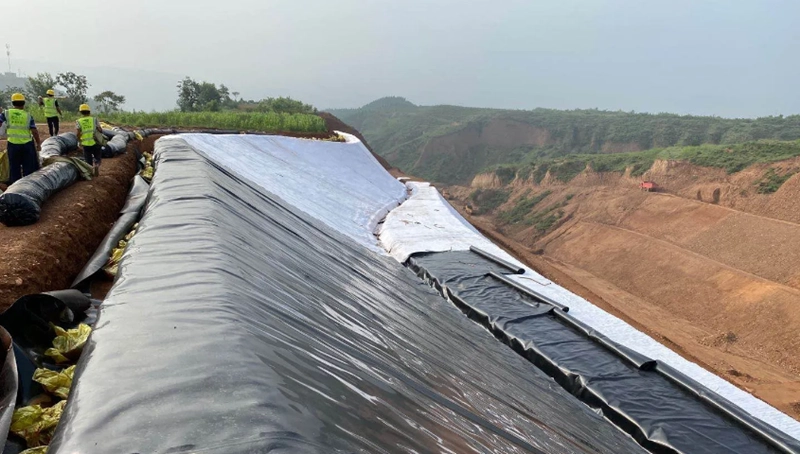
Composite geomembrane laying site
7. Precautions for installation of composite geomembrane
(1) During construction, sand surface or clay with a smaller diameter should first be used to smooth the base surface, and then the composite geomembrane lining system should be installed. The composite geomembrane should not be stretched too tightly, as the soil embedded in the soil at both ends will appear corrugated. Finally, layer the geomembrane with fine sand or clay in a layer of about 10 cm. Place 20-30 cm of block stones (or prefabricated blocks) as an impact protection layer. During construction, try to avoid direct contact of the stone with the geomembrane. It is best to construct the protective layer at the same time as laying the composite geomembrane lining system. The joints between the composite geomembrane lining system and the surrounding structures should be anchored with expansion bolts and steel strips, and the joints should be coated with emulsified asphalt (thickness 2mm) to prevent leakage.
(2) The contact surface between the composite geomembrane and the supporting material should be smooth to prevent the geomembrane from being punctured and losing the anti-seepage effect even if there is a layer of geotextile. Otherwise, a fine-grain buffer should be provided to protect the film from damage.
(3) Usually at corners and deformed sections, the joint length between composite geomembrane lining systems should be as short as possible. Except for special requirements, try not to weld in slopes greater than 1:6, away from top slopes or stress concentration areas. Within 1.5 meters.
(4) The connection of the composite geomembrane lining system itself. The connection methods of the anti-seepage geomembrane can be summarized into three types: bonding method, welding method and vulcanization method. According to the different raw materials of the anti-seepage geomembrane and the anti-seepage of all joints Sex and choice. All should be checked to prevent leaks and leaky joints. Fully automatic geomembrane HDPE lining welding machine is usually the ideal equipment to realize HDPE geomembrane welding seams.
(5) The connection between the composite geomembrane lining system and the surrounding boundary. The composite geomembrane lining system must be tightly integrated with the surrounding boundary. During construction, anchoring trenches can be excavated on the foundation and bank slope. If the foundation is a shallow gravel permeable layer, the gravel should be excavated until the bedrock is poured, and then the concrete foundation is poured. Composite geomembrane lining systems are anchored in concrete. If the foundation is impermeable, an anchor trench with a depth of 2m and a width of about 4m can be dug, the composite geomembrane is placed in the trench, and then the clay is densely backfilled; if the foundation is very deep, the gravel permeability layer can be passed through the HDPE geomembrane coating without permeable. The length is determined by calculation. The covered part must be flat, and a transition layer with a thickness of approximately 30cm and a maximum diameter of 20mm must be laid. Then set a protective layer for the filter layer. The periphery of the geomembrane lining should be tightly integrated with the impermeable layer on both sides of the river bank. The connection between the barrier geomembrane and the anchor trench is determined by the allowable contact penetration slope of the geomembrane and concrete. PVC and butyl rubber membranes can be adhered to the concrete surface with adhesives or solvents, so the embedded length can be shorter, because HDPE geomembrane cannot adhere to the concrete surface, so at least a length of 0.8m is embedded in the concrete.
(6) After the composite geomembrane is laid, walking and moving tools on the surface of the composite geomembrane lining system should be minimized. Any objects that may cause damage to the impermeable geomembrane should not be placed on or carried on the membrane to avoid accidental damage to the geomembrane.
(7) Pay attention to stacking the first layer of ore on the composite geomembrane in accordance with the work rules. Mining ore can easily destroy the geomembrane even if the upper layer of geotextile is used.
Please refer to the following link for the company details of Haoyang Environment.
http://en.haoyanghuanjing.com/
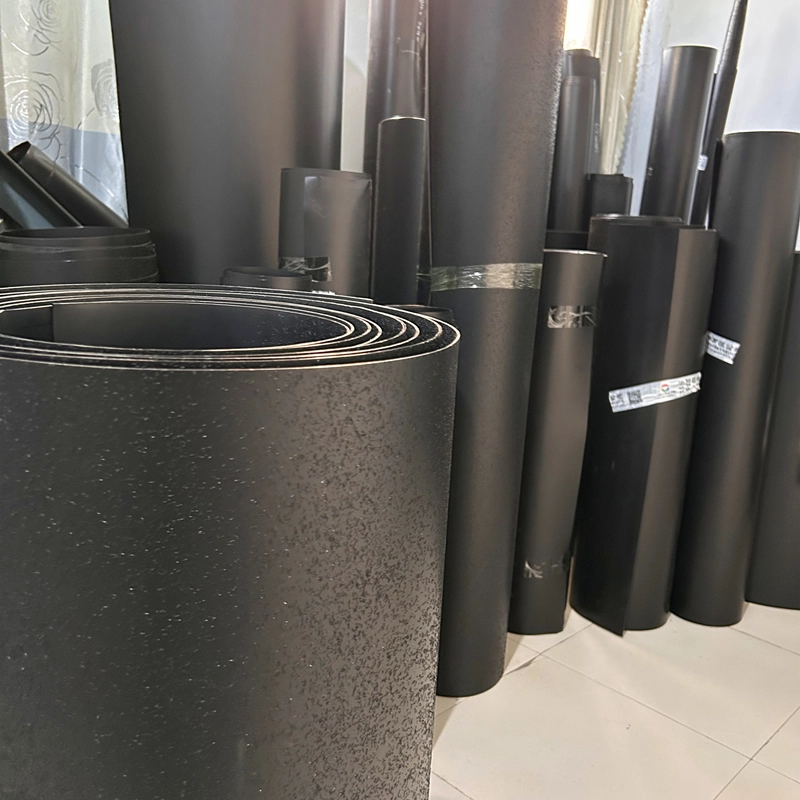
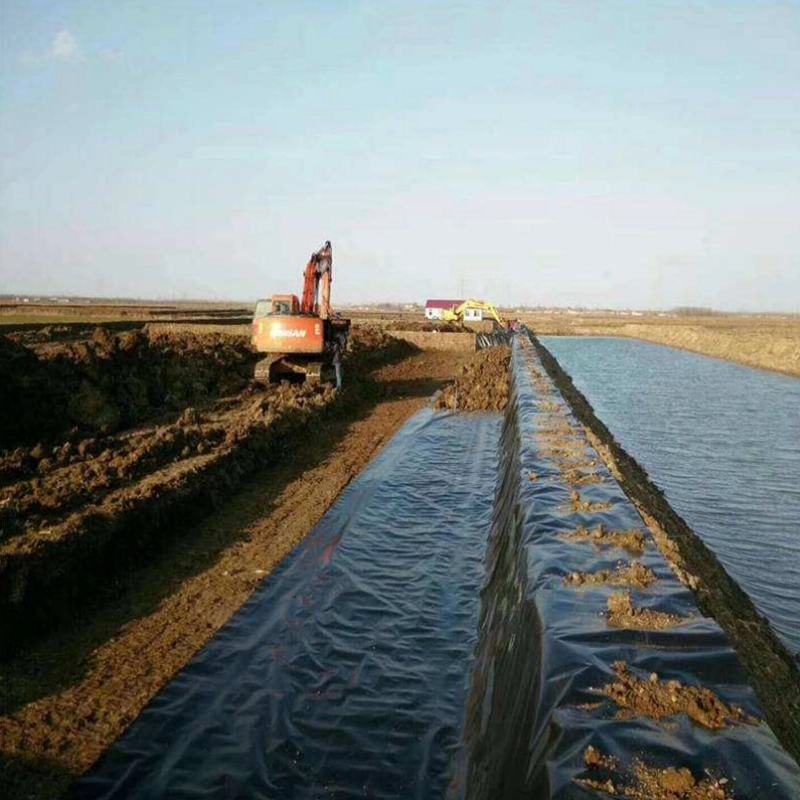
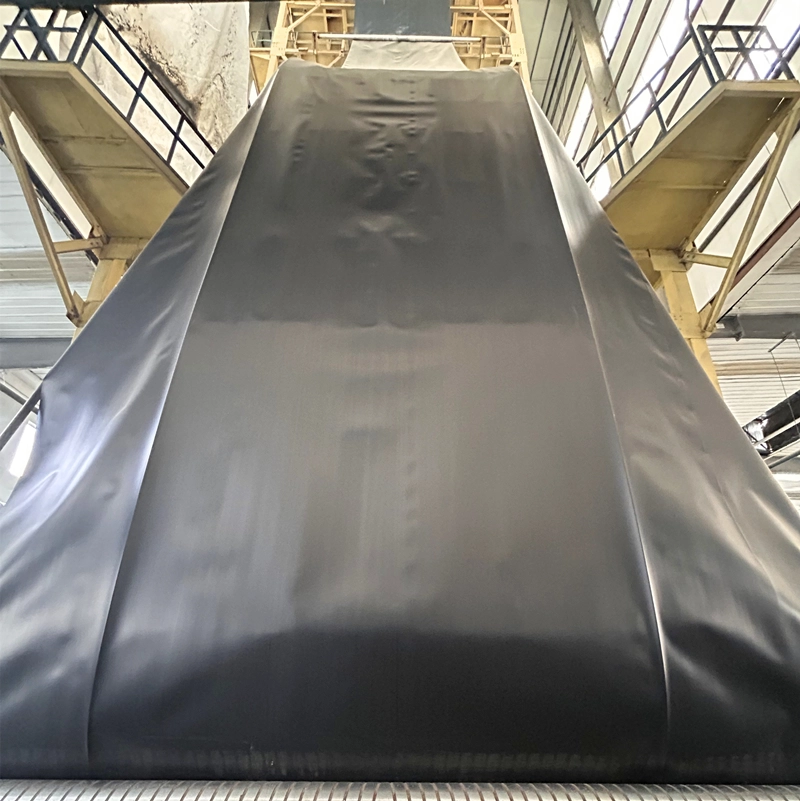
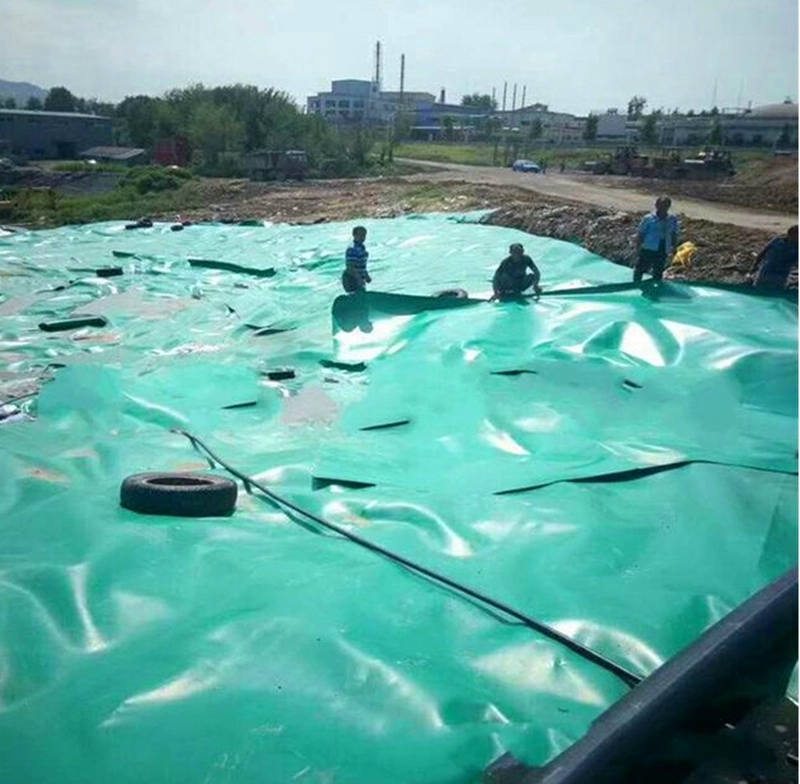
133.webp)
736.webp)
992.webp)
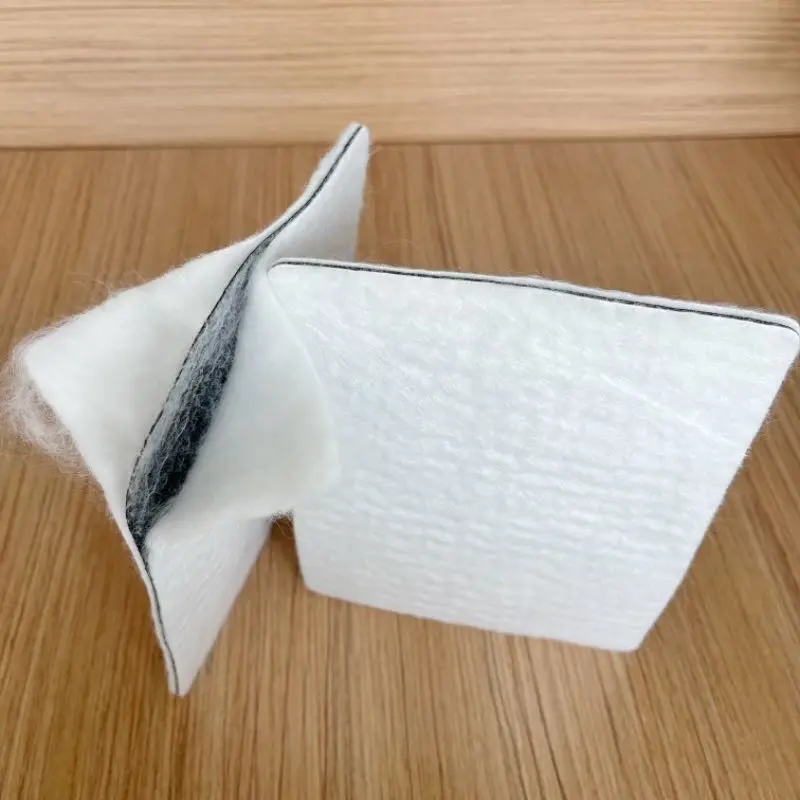
855.webp)